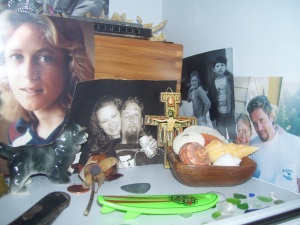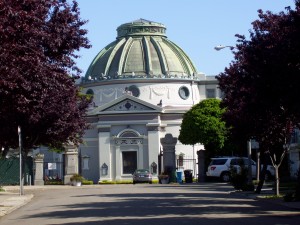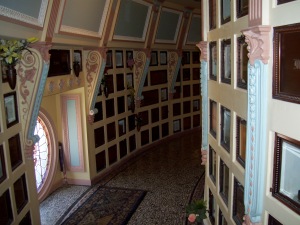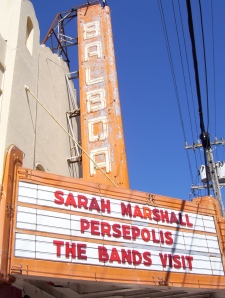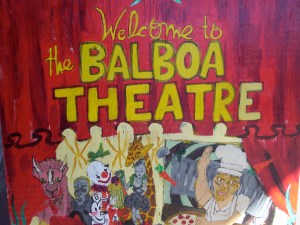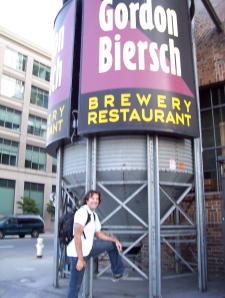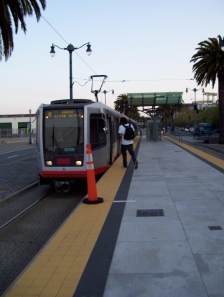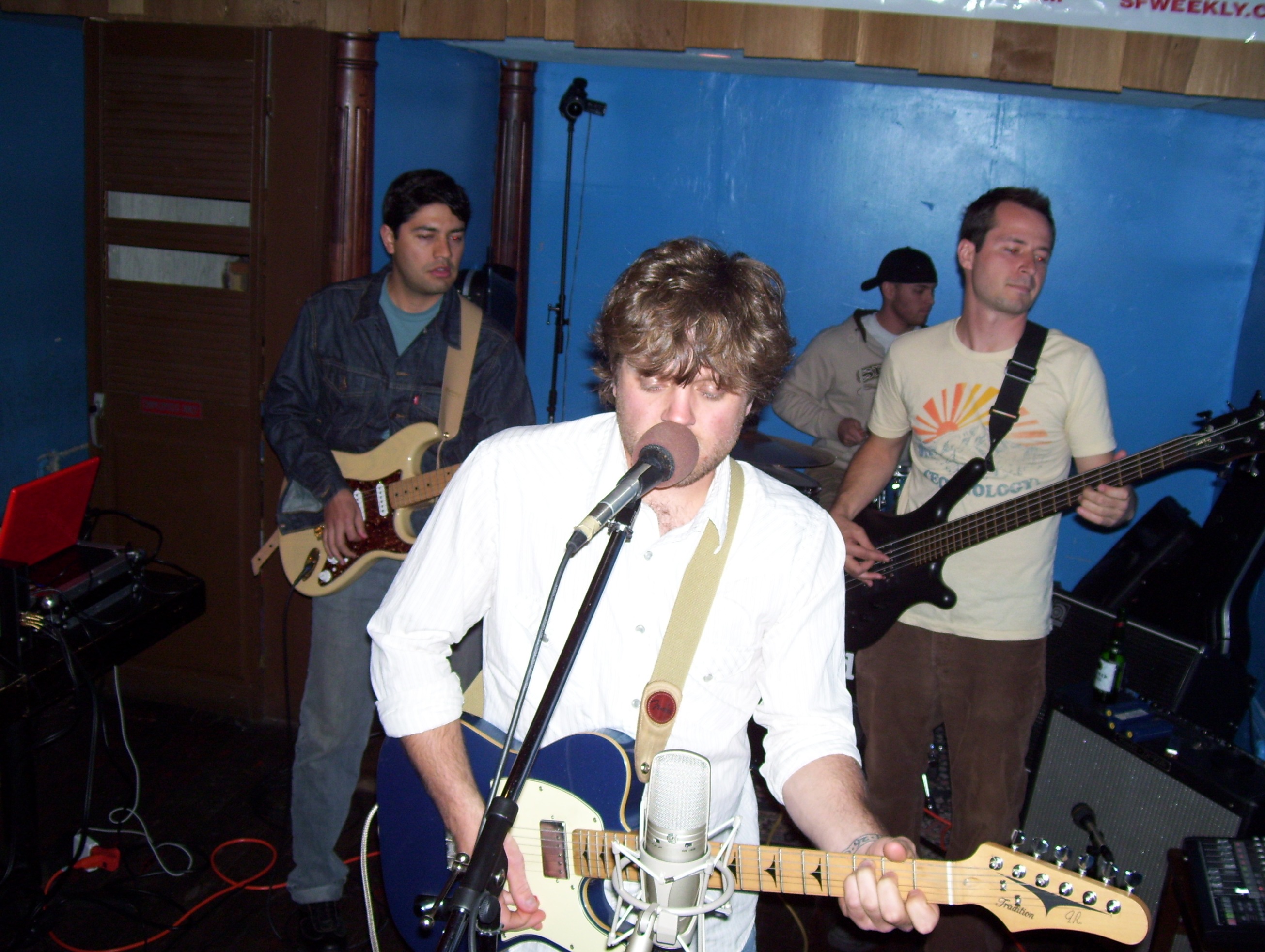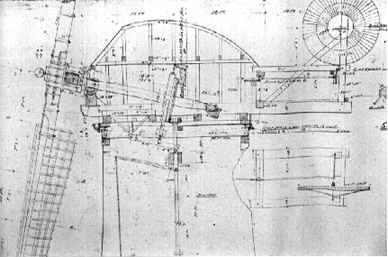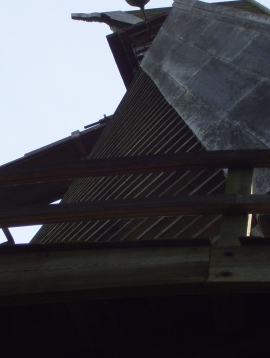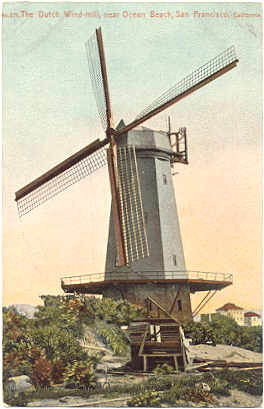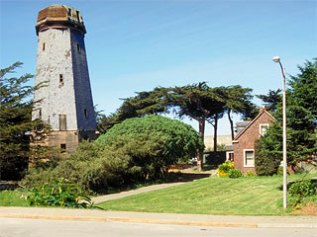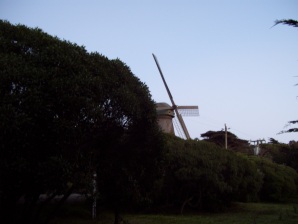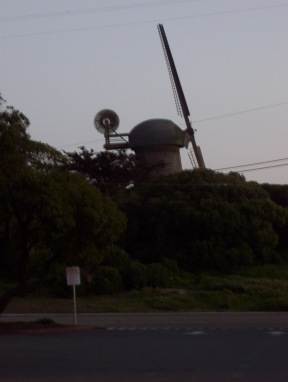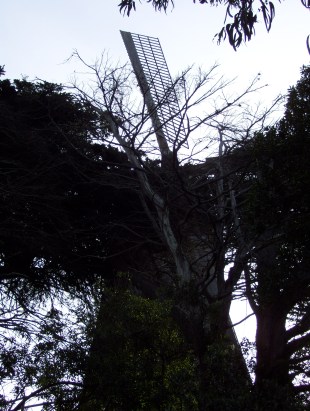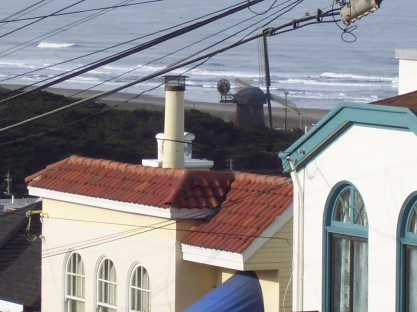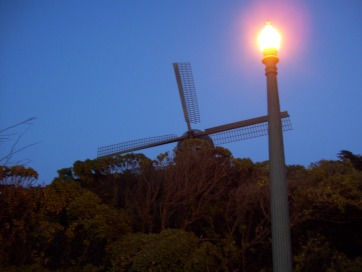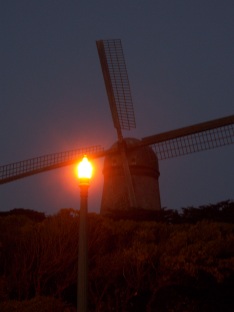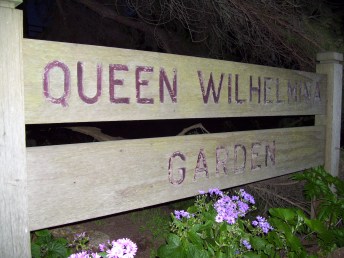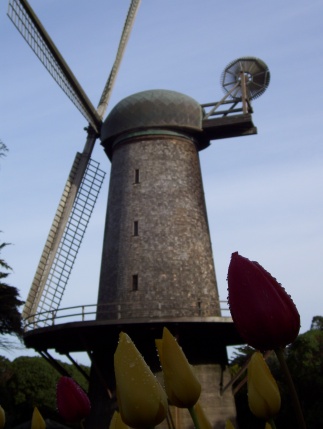I have discovered, in the Christopher Columbus sense of discovering, yet another SF oddity; the Palace of Fine Arts.

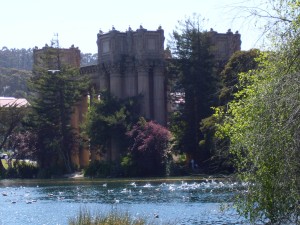
The Greek and Roman inspired “palace” is made up of a central standing domed structure (currently under renovation) that is surrounded by a series of colonnades.
Adjacent to the large looming structures is a small man made lake filled with seagulls, ducks, geese and turtles.
Below is a slideshow of how it looked when I was there on a magnificent day with my magnificent girlfriend Alicia (plus some added effects thanks to slide.com)
The history behind the creation of this misfit structure is amazing.
The Palace was built to be part of the 1915 Panama Pacific Exposition, essentially a world’s fair, which was aimed at celebrating the completion of the Panama Canal, the 400th anniversary of the discovery of the Pacific Ocean, and San Francisco’s recovery from the 1906 earthquake and fire. (www.sanfranciscomemories.com)
The architecture is stunning.


Walking underneath the structures feels just like being in Manhattan; your neck is craned upwards at the sky and you feel like you have been warped into the world of Honey I Shrunk the Kids.

A few years after the world-renowned fair, the beautiful structures were abandoned; once America entered the Depression and WWII, they succumbed to neglect, abuse, and they served as military posts among other odd things-much different than what was their original intention (i.e. Dutch Windmill).
Luckily, restoration efforts in the 1960’s led to the palace being completely rebuilt to its original condition.
There is no doubt that the palace is an oddity; its out of a completely different time period and a completely different side of the world. I’m not sure if it looks more out of place in pictures taken during modern contemporary culture, or in pictures from the early 20th century, when San Francisco was still developing.
All in all, the Palace of Fine Arts might not offer a great amount of in-your-face excitement, but it will without a doubt provide a great place to relax, have a picnic, or just simply walk around outdoors on a nice San Francisco day. Who knows, maybe you’ll meet someone interesting….I sure did…..
***
This is “Dog”.
![]()
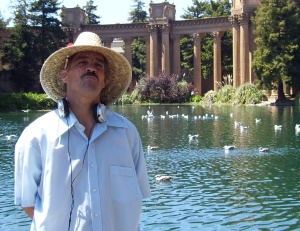
Dog was born and raised in the Mission district of San Francisco.
He is 44 years old. 28 years of his life have been spent in prison.
When I spotted Dog he was bent over on his hands and knees at the edge of the lake seen above.
At first I couldn’t make out what he was doing. However, as I got closer I realized that he was reaching into the lake to pick up trash.
While this act in itself is not out of the ordinary, I was somewhat perplexed and immediately curious about this crouched figure and his eco-friendly deed.
As he stood up I approached him and said “excuse me”. He didn’t hear me at first I soon noticed because he had headphones on, so I repeated myself only this time louder, “EXCUSE ME, SIR”.
After a semester of David Silver’s zen, the word “shy” no longer exists.
Dog turned around and i greeted him with a friendly handshake. “Hi, I’m Miles”.
He seemed a little hesitant and somewhat weary but he shook my hand and we immediately jumped into conversation. I asked him, “what were you just doing? why were you picking up that trash was it yours?”
He explained to me that the trash was not his, but he felt that since he had been in prison for so much of his life, picking up trash was something that he could now offer to give back to the community that he once took from.
Dog went on to tell me that he used to be involved with gangs, and was addicted to PCP and crack cocaine. However, through being in and out of prison for most of his life, he has gained an intense new spirituality that he follows to guide him down the right path. Today he is in an everyday battle to steer clear of the negative demons all around him, and somehow figure out the human formula for happiness.
For Dog that path has been trying. He talked about how in and out of prison over the course of many years, people have constantly provoked him and tried to bring him down to a lower level.
The worst example he gave was of a time when a group of men attacked him on the street in the Mission, stabbing him eight times with a phillips screwdriver.
Picking up trash is just one way for Dog to maintain his higher ground, something he seems to now have a very strong grasp of.
He preached to me about learning compassion and love and knowledge and how those things can enable each and every one of us to achieve limitless possibilities. These ideals, along with his spirituality and faith have kept Dog out of prison for two years now.
His goals are simply to be happy, and to re-establish contact with his 9 year old daughter, who he put into foster care when he began his most recent prison sentence.
***
While I was walking and picking Dog’s brain, we ran into a woman who offered us free tickets to the Exploratorium that lies on the palace grounds.
We graciously accepted the tickets and proceeded indoors to the short line leading into the exploratorium.
Dog got to the ticket window first and when he tried to enter, the staff member questioned him about whether or not he had a receipt for his ticket. When Dog admitted that he did not, the power-tripping peon proceeded to tell Dog that he could not enter.
I immediately interjected, eagerly lending a hand to my new friend.
“Well I have one of those tickets too. A lady outside gave them to us and she paid for them, why can’t we go in?”
The peon looked at me dumbfounded. He assumed that I didn’t know Dog, and that he was probably doing the rest of the museum-goers and myself a favor by kicking him out, seeing as he looks like and indeed is an ex-con.
“Is that policy in writing?”, I blurted. “WHY DO WE NEED A RECEIPT?”.
At that moment Dog turned and began to head for the door. Simultaneously the staff members’ supervisor emerged from a back room. I didn’t even wait for her to ask what was going on.
“Excuse me we have these tickets but we don’t have a receipt, are we NOT allowed to go in?” I questioned.
“No,” she responded. “You can go in”.
By this time Dog was already out the door and I was fuming over the blatant discrimination I had just witnessed. I walked away from the ticket window, pondering my next move, trying to calm myself and keep from saying something inappropriate.
After all, I do have a bit of a temper.
After composing myself, I again approached the ticket window, interrupting a conversation between the same staff member and another paying customer. I looked him right in the eyes and told him that the man he just turned away, unjustly and for no reason other than his own stereotypes, had only moments earlier been picking up trash on the exploratorium grounds under his own free will.
I said that just because perhaps someone doesn’t look sophisticated does not mean they don’t have every right to be in such a place as the exploratorium. I told him that he should think about this in the future, and then I walked away.
***
There is more to this story, but it will have to wait for now. The moral is that sometimes the best gifts come in the most unsuspecting packages.
Take a risk. Wherever you are, there could be something amazing. It’s just up to you to find it……
 Others include pictures of loved ones, toy figurines, and miscellaneous trinkets and objects that represent personal tastes.
Others include pictures of loved ones, toy figurines, and miscellaneous trinkets and objects that represent personal tastes. 